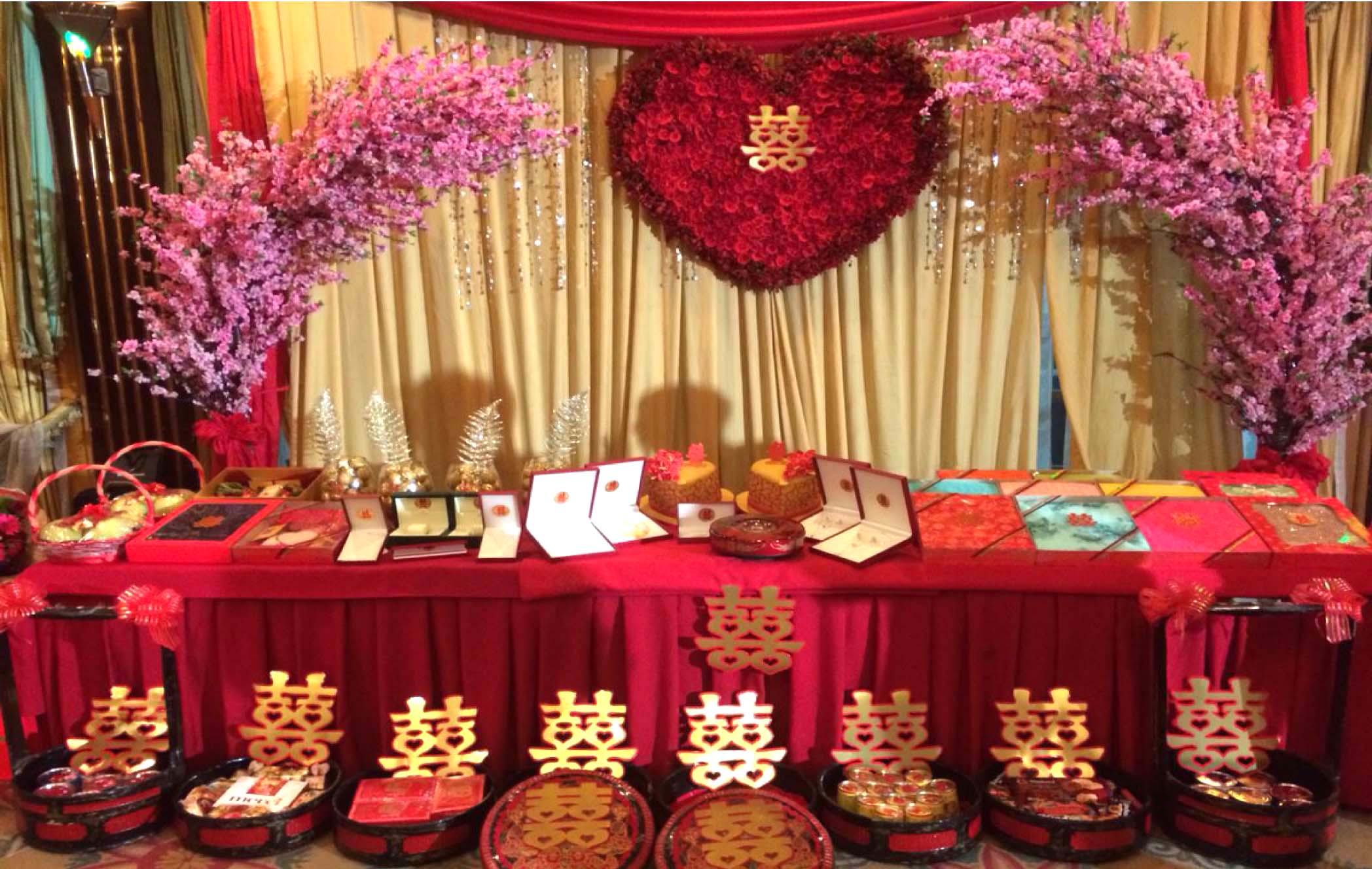Even in this modern day and age, Tsinoy traditions continue to underpin Tsinoy’s marriage rites. While modern Tsinoy couples incorporate Western elements into their weddings, they still abide by the same norms their parents practiced back in their generation, hoping to attract fortune and keep their parents happy.
“I find some of the [traditions] okay, especially if [they help] prepare [couples] for married life. However, I also find some of [them] impractical [because] you need to shell out money and take up too much time,” says newly-wed Meliza Go.
Far from disappearing from the mainstream culture, here are a few common pre-wedding, wedding, and post-wedding practices still being done today. We write about them not as an endorsement of these practices but simply to document some traditions.
Kiu hun
The future groom and his family will be visiting the soon-to-be bride’s home to make a formal marriage proposal. Kiu hun is equivalent to the pamanhikan. The groom’s family will be bringing boxes of fruits packed in even numbers and other sweets as a symbol of prosperity.
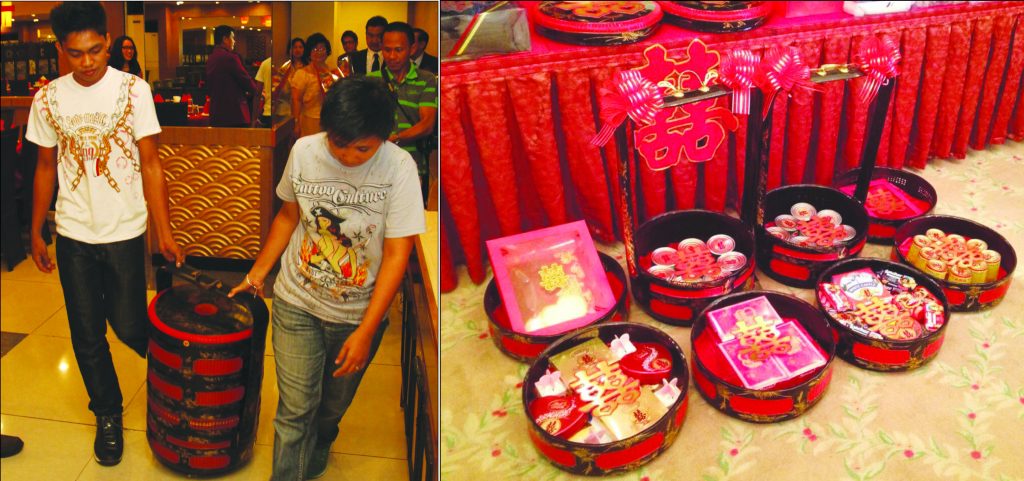
During the kiu hun or formal wedding proposal, both families will be discussing the wedding preparations in detail. They will also finalize the wedding date.
Ting hun
The couple will choose the guests who will witness the engagement ceremony based on compatible Chinese zodiac signs to prevent bad luck.
Engaged couples and pregnant women are not allowed to witness the ceremony since they might just take the engaged couple’s luck away. Those not compatible to witness the ceremony can join the reception though.
Jewelry that need to be prepared include watches, necklaces with a medallion pendant, men’s bracelet/ring, wedding rings, a pair of gold bangles with red thread and other sets of jewelry in red boxes.
The color red represents passion and love, while the jewelry symbolize a blissful union in a secure home.
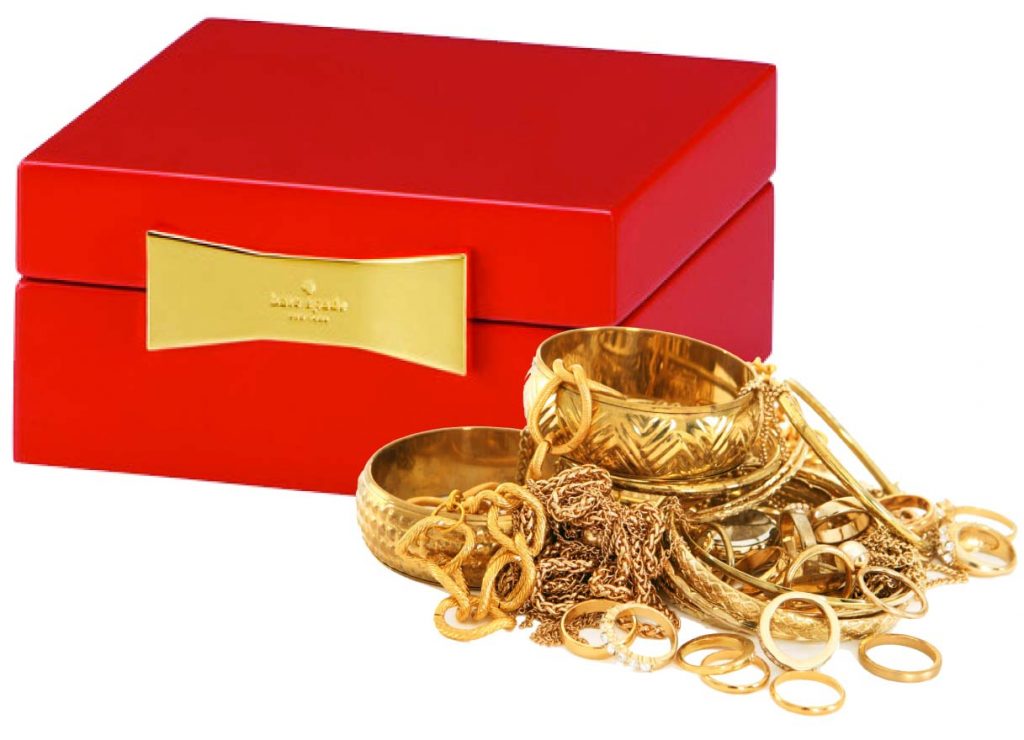
On the day of the engagement, the groom’s side arrives an hour before the ceremony starts.
The bride’s parents will welcome the groom’s engagement party. The groom is the first one to enter the room with a corsage, followed by his kin who will enter in pairs, each pair bringing along a four-layered bamboo basket or sin na.
Next to enter are the groom’s parents, followed by other family members. The groom’s elder relatives are in charge of arranging the gifts on the ceremonial table.
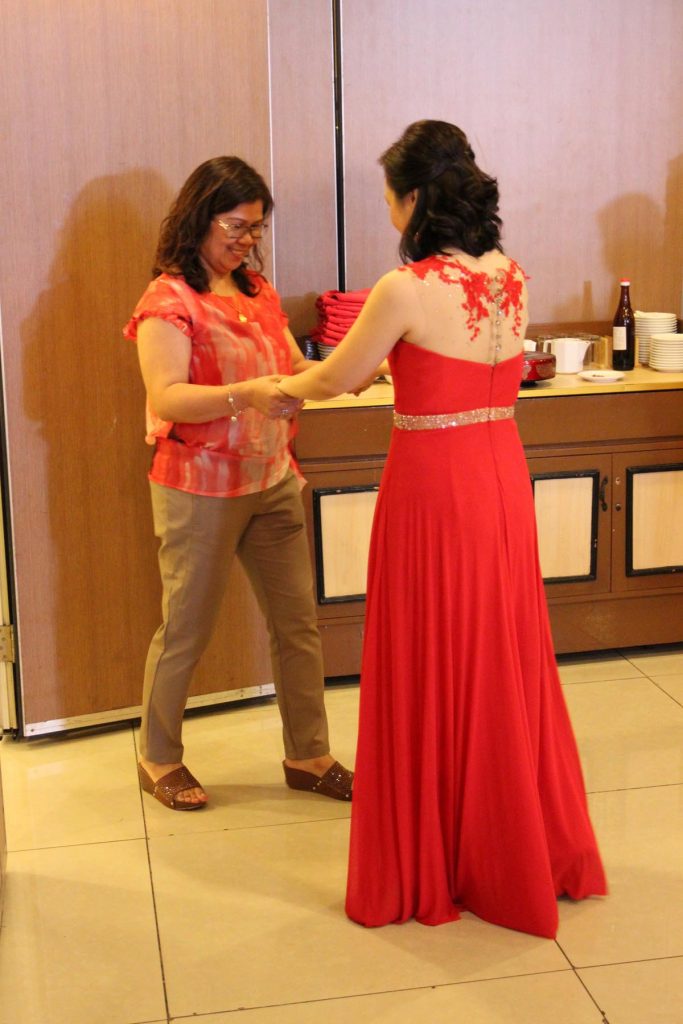
The bride enters the room walking backwards (to dispel negative energy), a chosen relative escorting her. She is also turned three times clockwise to establish the right yin-yang balance/energy.
The bride’s female relatives will then serve the welcome drink to those present, from the eldest to the youngest. The bride and groom are the last ones served.
After drinks are served, the bride’s and groom’s families then proceed with exchanging gifts. The bride then serves sweet tea to the groom’s family in order of seniority, as a gesture of respect. The groom does the same to the bride’s family. The bride is formally introduced to the groom’s family during the ceremony.
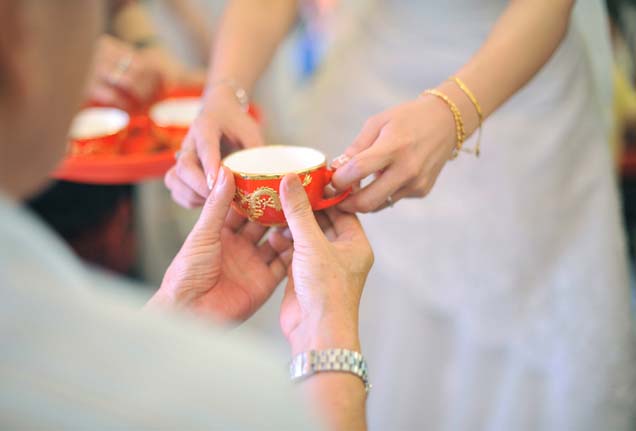
The bride’s mother invites the whole group to take tea. Her female relatives distribute flowers to single ladies present. The bride’s other family members are in charge of the giveaways, which include candies, fruits, canned goods, chocolate coins and hopia.
Flowers and sweets symbolize a sweet and harmonious relationship for the couple.
Visits to the sponsors
After the engagement, the couple visits their principal wedding sponsors. They bring a basket of goods containing mostly sweets and Chinese delicacies as a token.
After the sponsors have signified their acceptance of the honor, the couple will visit them a second time to bring fabric for the wedding attire as well as gifts of pork hocks (pata or tika, symbolizing good fortune) and misua (longevity).
Pre-wedding preparations
The groom delivers the bridal gown to the bride’s home. He may not see the bride before the wedding day as it is bad luck to do so.
He is also in charge of installing the bed in the couple’s new bedroom, and putting fruits and nuts – which represent prosperity – on the bed. The couple’s new bedroom will also be decorated with a red lantern, symbolizing balance and harmony; a pair of lamps on each side of the bed, and a wall mirror decorated with red fabric in an elaborate bow, to dispel bad energy.
Some will also ask young children to jump on the bed and eat the fruits and nuts, to bless the couple with fertility. A young boy with a Dragon zodiac sign will be asked to sleep on the bed with the groom prior to the wedding, so the soon-to-wed couple will have a son in the future.
Meanwhile, the bride is in charge of preparing the ke tseng, or dowry, which includes mostly furniture, interior decorations, home appliances, jewelry, and other day-to-day necessities.
Ke tseng is essentially the bride’s father’s gift to his daughter, to make sure that the bride will have enough as she embarks on her new journey as a married woman. The bride’s siblings or immediate male relatives bring the ke tseng to the couple’s new home on a designated date.
The family of the groom serves misua and eggs and distributes angpao to the ke tseng bearers.
Eggs and angpao symbolize fertility and prosperity, respectively.
Wedding customs
The bride wears a red robe while having her hair and makeup done. Her father has to comb her hair two to four times downwards after she wears the bridal gown, to ward off ill fate.
After the wedding they have a tea ceremony prior to the reception. As she has done during the engagement party, the bride serves tea to the groom’s family. In turn, the groom’s family gifts her with angpaos containing money or jewelry.
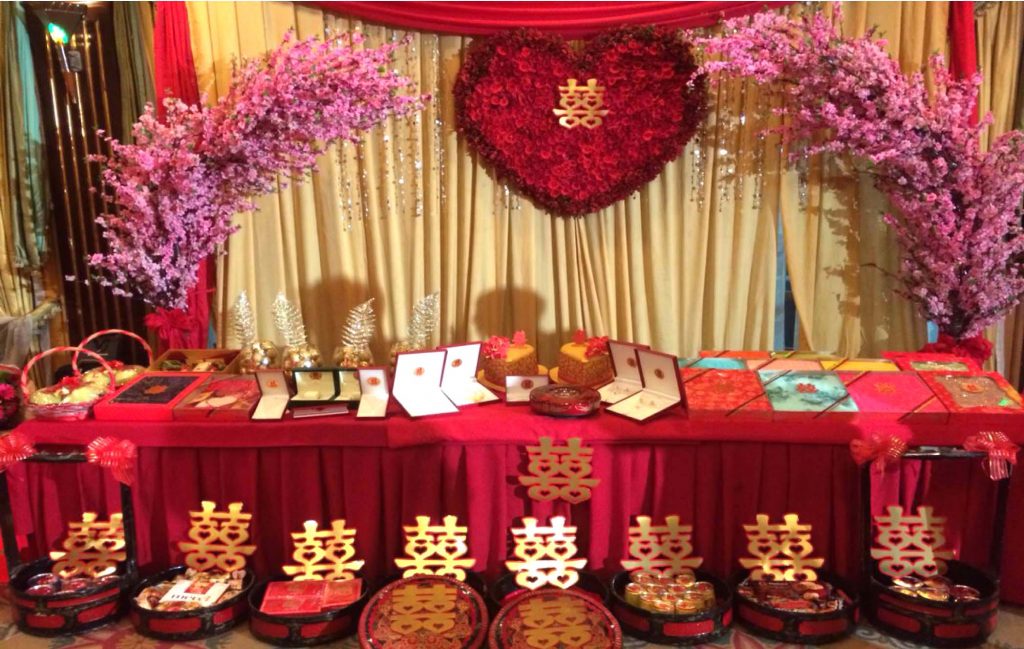
After the tea ceremony, the couple eats misua to symbolize their long life together.
Nowadays, Tsinoy couples no longer limit themselves to serving Chinese cuisine at the wedding reception. For those serving Chinese cuisine, typical dishes include pigeon, fish, and misua which represent fidelity, wealth, and long life, respectively.
Families of the bride and groom give angpaos to members of the entourage, as a token of gratitude.
Post-wedding customs
The couple visits the bride’s family three days after the wedding. The couple will have lunch with the bride’s parents. The bride’s family gives the couple sweets like sugarcane, which represent a harmonious married life, to take back home.
Some families also give a live rooster and hen placed in a cage. When the couple returns after the visit, they release the chickens in their bedroom.
Their firstborn will be a boy if the rooster comes out first and a girl if the hen comes out first. — First published in Tulay Fortnightly, Chinese-Filipino Digest 28, no. 4 (July 21-August 3, 2015): 15-16.
